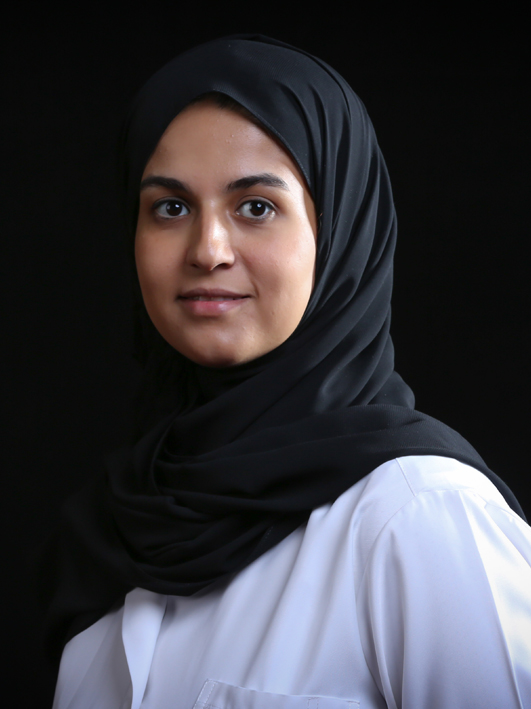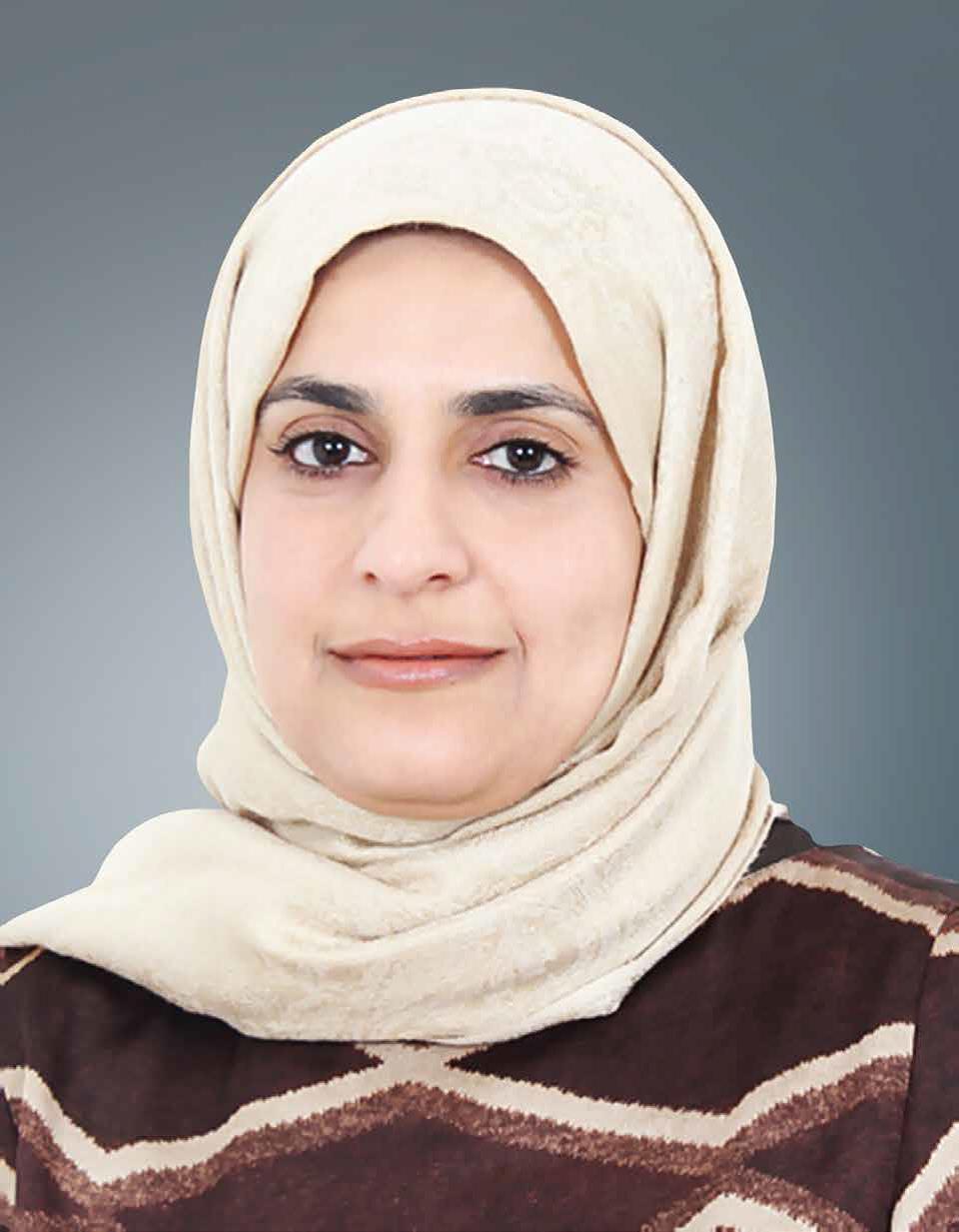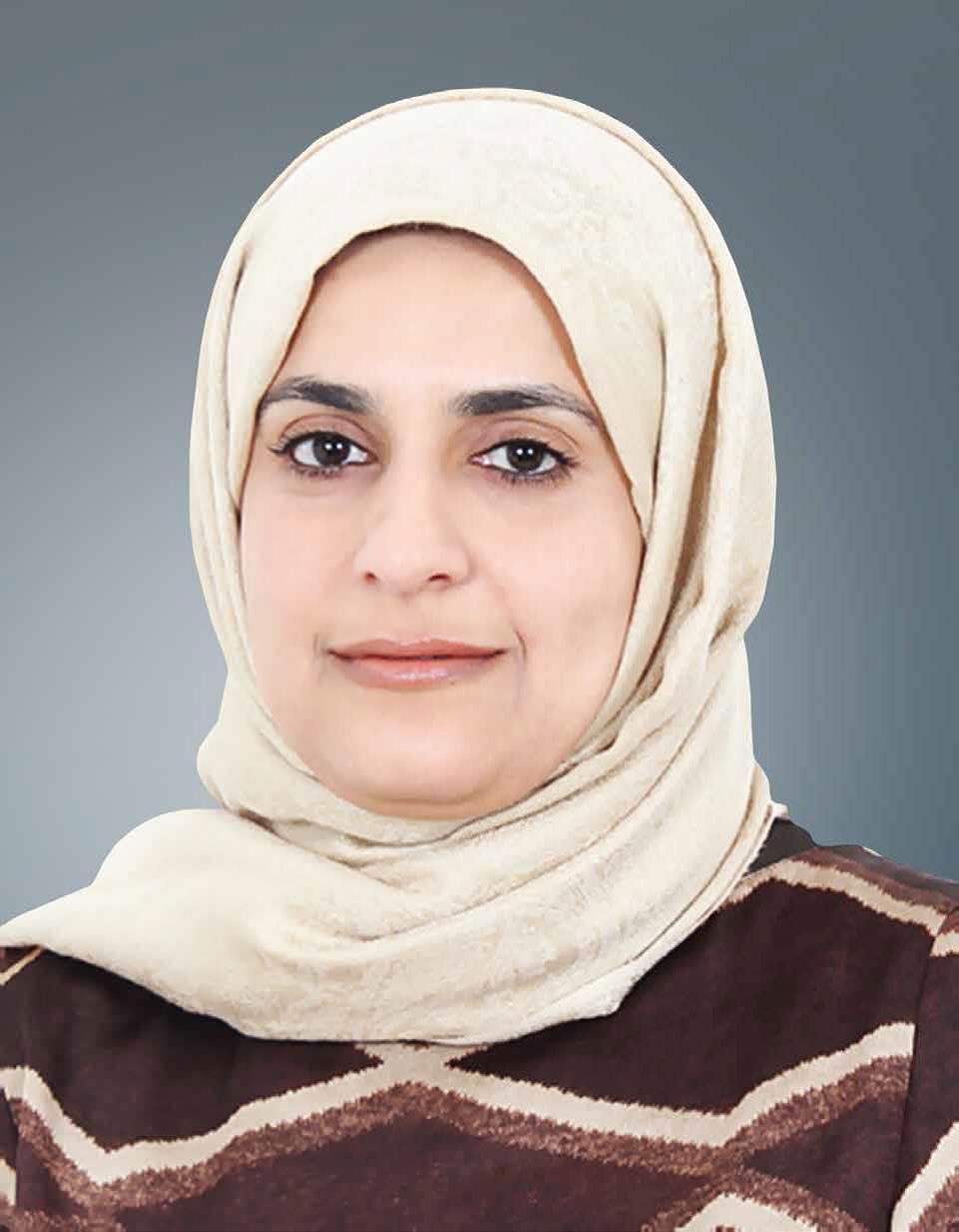Scientific Program
Keynote Session:
A PHP Error was encountered
Severity: 8192
Message: trim(): Passing null to parameter #1 ($string) of type string is deprecated
Filename: pastconference/past-program-schedule.php
Line Number: 239
Backtrace:
File: /efsdata/meetingsint-com/application/views/pastconference/past-program-schedule.php
Line: 239
Function: trim
File: /efsdata/meetingsint-com/application/controllers/Pastconference.php
Line: 128
Function: view
File: /efsdata/meetingsint-com/index.php
Line: 317
Function: require_once
Title: Pediatric gastrointestinal basidiobolomycosis mimicking malignancy
Biography:
Consultant Pediatric Infectious Diseases at King Abdulaziz Hospital (KAH) for National Guard, Al-Ahsa, KSA. MBBS from King Faisal University, Dammam in 2007. Saudi a board in Pediatrics(SSCP). Arab board in pediatrics (CABP) Clinical fellowship in Pediatric Infectious Diseases (SF-PED ID). program director of pediatric residency program at KAH. Chair of antimicrobial stewardship team in almoosa specialist hospital. Member of infection control committee in KAH. Member of Infectious diseases society of America (IDSA). Member of Saudi society of pediatric infectious diseases. Active full member of APIC Association for professionals in infection control and epidemiology(APIC). He has published several national and international articles in infectious diseases.
Abstract:
Basidiobolomycosis is a rare fungal infection with high prevalence in southwestern province of Saudi Arabia (Tohama region); it mainly causes subcutaneous infections and rarely gastrointestinal disease. Because of its indolent presentation, it is often misdiagnosed as IBD, tuberculosis or Malignancy. We are reporting a 7 year old Saudi girl with abdominal mass, fever and eosinophilia resembling malignancy on radiological and pathological picture fully recovered with only medical therapy in the form of oral Voriconazole.
Title: Transabdominal sonography of the stomach & duodenum
Biography:
Vikas Leelavati Balasaheb Jadhav has completed Post Graduation in Radiology in 1994. He has a 23 Years of experience in the field of Gastro-Intestinal Tract Ultrasound & Diagnostic as well Therapeutic Interventional Sonography. He is the Pioneer of Gastro-Intestinal Tract Sonography, especially Gastro-Duodenal Sonography. He has delivered many Guest Lectures in Indian as well International Conferences in nearly 27 countries as an Invited Guest Faculty, since March 2000. He is a Consultant Radiologist & the Specialist in Conventional as well Unconventional Gastro-Intestinal Tract Ultrasound & Diagnostic as well Therapeutic Interventional Sonologist in Pune, India.
Abstract:
Trans abdominal sonography of the stomach & duodenum can reveal following diseases. Gastritis & Duodenitis. Acid Gastritis. An Ulcer, whether it is superficial, deep with risk of impending perforation, Perforated, Sealed perforation, Chronic Ulcer & Post-Healing fibrosis & stricture. Polyps & Diverticulum. Benign intra-mural tumours. Intra-mural haematoma. Duodenal outlet obstruction due to Annular Pancreas. Gastro-Duodenal Ascariasis. Pancreatic or Biliary Stents. Foreign Body. Necrotizing Gastro-Duodenitis. Tuberculosis. Lesions of Ampulla of Vater like prolapsed, benign & infiltrating mass lesions. Neoplastic lesion is usually a segment involvement, & shows irregularly thickened, hypoechoic & aperistaltic wall with loss of normal layering pattern. It is usually a solitary stricture & has eccentric irregular luminal narrowing. It shows loss of normal Gut Signature. Enlargement of the involved segment seen. Shouldering effect at the ends of stricture is most common feature. Enlarged lymphnodes around may be seen. Primary arising from wall itself & secondary are invasion from peri-Ampullary malignancy or distant metastasis. All these cases are compared & proved with gold standards like surgery & endoscopy. Some extra efforts taken during all routine or emergent ultrasonography examinations can be an effective non-invasive method to diagnose primarily hitherto unsuspected benign & malignant Gastro-Intestinal Tract lesions so should be the investigation of choice.
Oral Session 1:
- Gastrointestinal Surgery | Gastrointestinal Infections | Digestive Diseases and Endoscopy | Endoscopy

Chair
Vikas Leelavati Balasaheb Jadhav
Dr. D.Y. Patil University, India

Co-Chair
Zainab Almoosa
King Abdulaziz Hospital Al-Ahsa, Saudi Arabia
A PHP Error was encountered
Severity: 8192
Message: trim(): Passing null to parameter #1 ($string) of type string is deprecated
Filename: pastconference/past-program-schedule.php
Line Number: 354
Backtrace:
File: /efsdata/meetingsint-com/application/views/pastconference/past-program-schedule.php
Line: 354
Function: trim
File: /efsdata/meetingsint-com/application/controllers/Pastconference.php
Line: 128
Function: view
File: /efsdata/meetingsint-com/index.php
Line: 317
Function: require_once
Title: Two cases about mesh adhesion to intra-abdominal cavity tissue after using mesh to repair incisional hernia
Biography:
Xuefeng Xia is currently working in Nanjing Drum Tower Hospital, China.
Abstract:
Abdominal incisional hernia is a common postoperative complication. With upgrading of new type surgical anti-adhesion mesh and development, mesh repair is a widely adopted procedure, particularly in a laparoscopic era. However, there were few reports about abdominal cavity condition after using these new type surgical anti-adhesion meshes to repair incisional hernia. In this report, we presented two cases. One was a 72-year-old male and the other was a 62-year-old female. Both of those two patients suffered abdominal operations and had incisional hernias after the first surgeries, and underwent open incisional hernia anti-adhesion mesh repair operations. Both of them had recurrence incisional hernias after the first repair operations. During the second hernia repair operations with laparoscope, intestine tissue and omentum were found adhesive to the old meshes seriously. Adhesion in abdomen could cause many serious problems. We need pay much more attention to this issue, try to figure out the possible reasons and improve in our future work.
A PHP Error was encountered
Severity: 8192
Message: trim(): Passing null to parameter #1 ($string) of type string is deprecated
Filename: pastconference/past-program-schedule.php
Line Number: 354
Backtrace:
File: /efsdata/meetingsint-com/application/views/pastconference/past-program-schedule.php
Line: 354
Function: trim
File: /efsdata/meetingsint-com/application/controllers/Pastconference.php
Line: 128
Function: view
File: /efsdata/meetingsint-com/index.php
Line: 317
Function: require_once
Title: Inflammatory bowel disease in Bahrain: Single-center experience
Biography:
Maheeba Abdulla is Consultant Gastroenterologist and Hepatologist at Salmaniya Medical Complex, Bahrain. After gaining her medical degree, she completed her residency and subsequently undertook an international fellowship in gastroenterology and Hepatology at king Faisal Specialist Hospital in Riyadh, Saudi Arabia followed by two fellowships in liver transplantation and advanced therapeutic endoscopy at King’s College London and Queen Alexandra Hospital, Portsmouth, both in the UK. She has published several original articles and presented posters at international meetings. At present her research interests focus on hepatitis C virus infection, Hepatitis B virus infection and inflammatory bowel disease.
Abstract:
Purpose: The number of newly diagnosed inflammatory bowel disease (IBD) cases such as ulcerative colitis (UC), Crohn’s disease (CD), and indeterminate colitis (IC) is rapidly increasing in Gulf countries and Saudi Arabia. The aim of this study was to investigate the incidence and prevalence of IBD in patients who have attended the Salmaniya Medical Complex, Bahrain, between the years 1984 and 2014.
Patients and methods: All patients who had attended the Salmaniya Medical Complex, Bahrain, and had been diagnosed with UC, CD, or IC, between the years 1984 and 2014, were included in the analysis. Data collected were: patient demographics, symptoms, clinical signs, complications, surgical interventions, extent of disease, endoscopic findings, histopathology, and lab measurements.
Results: A total of 187 cases were included; 61 had CD, 123 had UC, and a further 3 cases presented with IC. A clear increase in the incidence and prevalence of IBD can be seen in this cohort. The prevalence of IBD was calculated to be 26.25/105 cases. The average number of IBD cases increased from 3 cases (average for the years 1984–2001) to 12 cases (average for the years 2002–2014). A number of factors correlate positively or negatively with CD and UC. In the current study, a link between gastrointestinal complications in CD cases and the use of steroids as a treatment was noted (p-value −0.02). Age also had a significant influence on the need for surgery in CD cases (p-value −0.04), and a family history of UC was statistically linked to surgical intervention (p-value −0.05).
Conclusions: IBD can no longer be considered a rare disease in Bahrain. The incidence of both UC and CD is steadily increasing. There is a need for increasing awareness of the Bahraini public to IBD in order for proper medical care to be given.
A PHP Error was encountered
Severity: 8192
Message: trim(): Passing null to parameter #1 ($string) of type string is deprecated
Filename: pastconference/past-program-schedule.php
Line Number: 354
Backtrace:
File: /efsdata/meetingsint-com/application/views/pastconference/past-program-schedule.php
Line: 354
Function: trim
File: /efsdata/meetingsint-com/application/controllers/Pastconference.php
Line: 128
Function: view
File: /efsdata/meetingsint-com/index.php
Line: 317
Function: require_once
Title: Transcutaneous electroacupuncture alleviates postoperative ileus after gastrectomy: A randomized clinical trial
Biography:
Kai-Bo Chen is a general surgeon, working in the Second Affiliated Hospital of Zhejiang University, College of Medicine, Hangzhou, who has graduated from the Zhejiang University with Bachelor degree of Life Science and MD degree in the year of 2014. He is now a fellow Doctor well trained in general surgery, especially in open or laparoscopic gastrectomy as well as thyroidectomy. He also does some clinical and laboratory researches about gastric cancer, especially the metastatic mechanism of gastric cancer, such as peritoneal metastasis.
Abstract:
Aim: To investigate the efficacy and safety of transcutaneous electroacupuncture (TEA) to alleviate postoperative ileus (POI) after gastrectomy.
Methods: From April 2014 to February 2017, 63 gastric cancer patients were recruited from the Second Affiliated Hospital of Zhejiang University School of Medicine, Hangzhou, China. After gastrectomy, the patients were randomly allocated to the TEA (n = 33) or control (n = 30) group. The patients in the TEA group received 1 h TEA on Neiguan (ST36) and Zusanli (PC6) twice daily in the morning and afternoon until they passed flatus. The main outcomes were hours to the first flatus or bowel movement, time to nasogastric tube removal, time to liquid and semi-liquid diet, and hospital stay. The secondary outcomes included postoperative symptom assessment and complications.
Results: Time to first flatus in the TEA group was significantly shorter than in the control group (73.19 ± 15.61 vs 82.82 ± 20.25 h, P = 0.038), especially for open gastrectomy (76.53 ± 14.29 vs 87.23 ± 20.75 h, P = 0.048). Bowel sounds on day 2 in the TEA group were significantly greater than in the control group (2.30 ± 2.61/min vs 1.05 ± 1.26/min, P = 0.017). Time to nasogastric tube removal in the TEA group was earlier than in the control group (4.22 ± 1.01 vs 4.97 ± 1.67 d, P = 0.049), as well as the time to liquid diet (5.0 ± 1.34 vs 5.83 ± 2.10 d, P = 0.039). Hospital stay in the TEA group was significantly shorter than in the control group (8.06 ± 1.75 vs 9.40 ± 3.09 d, P = 0.041). No significant differences in postoperative symptom assessment and complications were found between the groups. There were no severe adverse events related to TEA.
Conclusion: TEA accelerated bowel movements and alleviated POI after open gastrectomy and shortened hospital stay.
A PHP Error was encountered
Severity: 8192
Message: trim(): Passing null to parameter #1 ($string) of type string is deprecated
Filename: pastconference/past-program-schedule.php
Line Number: 354
Backtrace:
File: /efsdata/meetingsint-com/application/views/pastconference/past-program-schedule.php
Line: 354
Function: trim
File: /efsdata/meetingsint-com/application/controllers/Pastconference.php
Line: 128
Function: view
File: /efsdata/meetingsint-com/index.php
Line: 317
Function: require_once
Title: Transabdominal Sonography of the small & large Intestines
Biography:
Vikas Leelavati Balasaheb Jadhav has completed Post Graduation in Radiology in 1994. He has a 23 Years of experience in the field of Gastro-Intestinal Tract Ultrasound & Diagnostic as well Therapeutic Interventional Sonography. He is the Pioneer of Gastro-Intestinal Tract Sonography, especially Gastro-Duodenal Sonography. He has delivered many Guest Lectures in Indian as well International Conferences in nearly 27 countries as an Invited Guest Faculty, since March 2000. He is a Consultant Radiologist & the Specialist in Conventional as well Unconventional Gastro-Intestinal Tract Ultrasound & Diagnostic as well Therapeutic Interventional Sonologist in Pune, India.
Abstract:
Transabdominal Sonography of the small & large Intestines can reveal following diseases. Bacterial & Viral Entero-Colitis. An Ulcer, whether it is superficial, deep with risk of impending perforation, Perforated, Sealed perforation, Chronic Ulcer & Post-Healing fibrosis & stricture. Polyps & Diverticulum. Benign intra-mural tumours. Intra-mural haematoma. Intestinal Ascariasis. Foreign Body. Necrotizing Entero-Colitis. Tuberculosis. Intussusception. Inflammatory Bowel Disease, Ulcerative Colitis, Cronhs Disease. Complications of an Inflammatory Bowel Disease – Perforation, Stricture. Neoplastic lesion is usually a segment involvement, & shows irregularly thickened, hypoechoic & aperistaltic wall with loss of normal layering pattern. It is usually a solitary stricture & has eccentric irregular luminal narrowing. It shows loss of normal Gut Signature. Enlargement of the involved segment seen. Shouldering effect at the ends of stricture is most common feature. Primary arising from wall itself & secondary are invasion from adjacent malignancy or distant metastasis. All these cases are compared & proved with gold standards like surgery & endoscopy. Some extra efforts taken during all routine or emergent ultrasonography examinations can be an effective non-invasive method to diagnose primarily hitherto unsuspected benign & malignant Gastro-Intestinal Tract lesions, so should be the investigation of choice.
A PHP Error was encountered
Severity: 8192
Message: trim(): Passing null to parameter #1 ($string) of type string is deprecated
Filename: pastconference/past-program-schedule.php
Line Number: 354
Backtrace:
File: /efsdata/meetingsint-com/application/views/pastconference/past-program-schedule.php
Line: 354
Function: trim
File: /efsdata/meetingsint-com/application/controllers/Pastconference.php
Line: 128
Function: view
File: /efsdata/meetingsint-com/index.php
Line: 317
Function: require_once
Title: Adenocarcinoma arising from a gastric duplication cyst: A case report and literature review
Biography:
Maheeba Abdulla is Consultant Gastroenterologist and Hepatologist at Salmaniya Medical Complex, Bahrain. After gaining her medical degree, she completed her residency and subsequently undertook an international fellowship in gastroenterology and Hepatology at king Faisal Specialist Hospital in Riyadh, Saudi Arabia followed by two fellowships in liver transplantation and advanced therapeutic endoscopy at King’s College London and Queen Alexandra Hospital, Portsmouth, both in the UK. She has published several original articles and presented posters at international meetings. At present her research interests focus on hepatitis C virus infection, Hepatitis B virus infection and inflammatory bowel disease.
Abstract:
Introduction: Alimentary tract cystic duplication is a rare congenital anomaly predominantly affecting females, and diagnosed mostly in the early years of life. The most common location is the ileum while the least common site is the stomach. Although very rare, carcinoma can arise from a gastric duplication cyst.
Case report: We present here a case of a 51-year-old man presenting with a 2-day history of melena. Gastroscopy showed fresh blood, as well as a mass lesion and cavity at the fundus. Biopsies of the mass edge reported the occurrence of moderately differentiated adenocarcinoma and mild chronic gastritis. Computed tomography imaging showed a 5.1×6.5 cm cystic mass in the gastric greater curvature. The patient received six cycles of epirubicin, capecitabine, and oxaliplatin, followed by uncomplicated total gastrectomy.
Literature review: Data from all 11 reports of similar cases were reviewed and pooled. The result shows male predominance and variable symptoms, as well as a wide age range (25–76 years) at presentation. The cysts are commonly located along the greater curvature and are unilocular. Surgery was the treatment in most cases.
Conclusion: Alimentary tract cystic duplication is rare and may predispose to malignancy. The diagnosis should be considered when a cystic lesion is found adjoining the gastric wall. Early diagnosis and prompt surgical intervention is important for the best outcome.
Keynote Session:
Oral Session 1:
- Advances in Gastroenterology | Digestive Diseases and Endoscopy | Nutrition & Gastroenterology | Intestinal Rehabilitation

Chair
Vikas Leelavati Balasaheb Jadhav
Dr. D.Y. Patil University, India

Co-Chair
Zainab Almoosa
King Abdulaziz Hospital Al-Ahsa, Saudi Arabia
A PHP Error was encountered
Severity: 8192
Message: trim(): Passing null to parameter #1 ($string) of type string is deprecated
Filename: pastconference/past-program-schedule.php
Line Number: 354
Backtrace:
File: /efsdata/meetingsint-com/application/views/pastconference/past-program-schedule.php
Line: 354
Function: trim
File: /efsdata/meetingsint-com/application/controllers/Pastconference.php
Line: 128
Function: view
File: /efsdata/meetingsint-com/index.php
Line: 317
Function: require_once
Title: Meta-analysis of the mutational status of circulation tumor cells and paired primary tumor tissues from colorectal cancer patients
Biography:
Yong Liu is currently working at Surgical Department of Colorectal Cancer, Zhejiang Cancer Hospital, Hangzhou, Zhejiang Province, China.
Abstract:
As predictive markers for anti-EGFR therapy, KRAS and BRAF mutations are routinely detected in primary and metastatic colorectal cancer (CRC) cells, but seldom in circulating tumor cells (CTCs). Detecting mutations in CTCs could help explain mutational differences between tumor cells at local sites and distant metastases, thereby improving treatment outcomes. Here, we conducted a systematic review and meta-analysis to compare KRAS and BRAF mutations in paired CTCs and primary tumors from CRC patients, to detect any possible discordance. A total of 244 CRC patients from nine studies were included. Our subgroup meta-analysis demonstrated that the total odds ratio for mutations in CTCs was only 55% of that in primary tumors in the stage IV subgroup. We also found low heterogeneity among studies and differences in mutations between CTCs and primary tumors in the stage IV subgroup (I 2 = 0%, P = 0.01). We observed a higher frequency of KRAS mutations in CTCs than in primary tumors at early stages (I + II), a similar frequency in stage III, and a lower frequency in stage IV. There were also differences among the Epcam-targeted CTC enrichment, PCR-based mutation profiling, and ≥ 3 CTCs enriched (I 2 = 0%, P = 0.03) subgroups. These finding indicate mutational discordance between CTCs and primary CRCs, particularly in the stage IV and KRAS subgroups. We suggest large-sample studies stratified by clinical stage and KRAS subtype are urgently warranted to accurately evaluate mutational variations in CTCs compared to primary and metastatic CRC cells.
A PHP Error was encountered
Severity: 8192
Message: trim(): Passing null to parameter #1 ($string) of type string is deprecated
Filename: pastconference/past-program-schedule.php
Line Number: 354
Backtrace:
File: /efsdata/meetingsint-com/application/views/pastconference/past-program-schedule.php
Line: 354
Function: trim
File: /efsdata/meetingsint-com/application/controllers/Pastconference.php
Line: 128
Function: view
File: /efsdata/meetingsint-com/index.php
Line: 317
Function: require_once
Title: Turning/field of gastroenterology chemical and pharmaceutical to mult
Biography:
Goodluck, Fadoorn Innocent Obilor received Bachelor’s and Master’s degrees from MIT in Chemical and Pharmaceutical Engineering and PhD from the University of Washington in Molecular Biology under the supervision of Dr. Leroy Hood. He is the Professor of Medicine at the University of California at San Diego. He serves as Division Chief of Medical Genetics and Director of the National Resource for Network Biology, as well as being Adjunct Professor of Bioengineering and Computer Science and Member of the Moore’s UCSD Cancer Centre. He is a pioneer in assembling genome-scale measurements to construct Chemical and Pharmaceutical processes and disease. Dr. Fadoorn serves as an Editorial Board member for Bioinformatics, Chemical and Pharmaceutical, member of the Scientific Advisory Boards of the Sanford-Burnham Medical Research Institute and the Institute for Systems Biology, and is a regular consultant for companies such as Monsanto and Mendel Biotechnology. He was named one of the Top 10 Innovators of 2006 by Technology Review magazine and was the recipient of the 2009 Overton Prize from the International Society for Computational Biology. His work has been featured in news outlets such as The Scientist, the San Diego Union Tribune, Forbes magazine and the New York Times.
Abstract:
Recent advancements and therapeutic techniques in the field of gastroenterology /Hepatocellular Carcinoma (Liver Cancer),Clinical Nutrition in Gastrointestinal Diseases, Inflammatory Bowel Disease Research Vs. Treatment, Gastrointestinal Therapeutic Endoscopy-Advancements and Challenges, Bariatric Surgery- Chemical and Pharmaceutical I have been very useful for capturing knowledge as In Gastrointestinal Diseases ,Hepatocellular Carcinoma (Liver Cancer),Chemical and Pharmaceutical, a prime challenge has been to develop Chemical and Pharmaceutical function given only partial Chemical and Pharmaceutical knowledge and inconsistency in how this knowledge is curated by experts., Again Towards A Data-driven Gene Ontology , Clinical Nutrition in Gastrointestinal Diseases, Probiotics as Gastrointestinal Therapeutics, Advancements and Current Research in Gastrointestinal Therapeutics, GI Oncology, Ontologies have been very useful for capturing knowledge as a hierarchy of concepts and their interrelationships. In biology, a prime challenge has been to develop ontologies of gene function given only partial biological knowledge and inconsistency in how this knowledge is curated by experts. I will discuss how large networks of gene and protein interaction, as are being mapped systematically for many species, can be transformed to assemble ontology with equivalent coverage and power to the manually-curated Gene Ontology (GO). Our network-extracted ontology contains 4,123 biological concepts.
A PHP Error was encountered
Severity: 8192
Message: trim(): Passing null to parameter #1 ($string) of type string is deprecated
Filename: pastconference/past-program-schedule.php
Line Number: 354
Backtrace:
File: /efsdata/meetingsint-com/application/views/pastconference/past-program-schedule.php
Line: 354
Function: trim
File: /efsdata/meetingsint-com/application/controllers/Pastconference.php
Line: 128
Function: view
File: /efsdata/meetingsint-com/index.php
Line: 317
Function: require_once
Title: The redefinition of Helicobacter pylori lipopolysaccharide O-antigen and coreoligosaccharide domains
Biography:
Hong Li obtained his MD degree at North Sichuan Medical College, China in 2006. He then became a registered physician in West China Hospital in 2007. He obtained his Master degree in HBV infection at West China Hospital, Sichuan University in 2009. In October 2009, he was awarded the PhD Full-Scholarship from The University of Western Australia (UWA) under the supervision of Nobel laureate Professor Barry Marshall, Drs Mohammed Benghezal, Hans-Olof Nilsson and Keith Stubbs from UWA. His study in UWA led to the completion of his PhD thesis titled “Lipopolysaccharide biosynthesis and protein glycosylation in Helicobacter pylori” and awarded the PhD degree in Microbology from UWA. In 2015, Hong Li returned back to West China Hospital of Sichuan University and actively promoted the academic collaboration between Sichuan University and UWA with the establishment of the collaboration center---"West China-Marshall Research Center for Infectious Diseases" in Chengdu.
Abstract:
Helicobacter pylori lipopolysaccharide promotes chronic gastric colonization through O-antigen host mimicry and resistance to mucosal antimicrobial peptides mediated primarily by modifications of the lipid A. The structural organization of the core and O-antigen domains of H. pylori lipopolysaccharide remains unclear, as the O-antigen attachment site has still to be identified experimentally. Here, structural investigations of lipopolysaccharides purified from two wild-type strains and the O-antigen ligase mutant revealed that the H. pylori core-oligosaccharide domain is a short conserved hexasaccharide (Glc-Gal-DD-Hep-LD-Hep-LD-Hep-KDO) decorated with the O-antigen domain encompassing a conserved trisaccharide (-DD-Hep-Fuc-GlcNAc-) and variable glucan, heptan and Lewis antigens. Furthermore, the putative heptosyltransferase HP1284 was found to be required for the transfer of the third heptose residue to the core-oligosaccharide. Interestingly, mutation of HP1284 did not affect the ligation of the O-antigen and resulted in the attachment of the O-antigen onto an incomplete core-oligosaccharide missing the third heptose and the adjoining Glc-Gal residues. Mutants deficient in either HP1284 or O-antigen ligase displayed a moderate increase in susceptibility to polymyxin B but were unable to colonise the mouse gastric mucosa. Finally, mapping mutagenesis and colonisation data of previous studies onto the redefined organisation of H. pylori lipopolysaccharide revealed that only the conserved motifs were essential for colonization. In conclusion, H. pylori lipopolysaccharide is missing the canonical inner and outer core organization. Instead it displays a short core and longer O-antigen encompassing residues previously assigned as the outer core domain. The previously proposed LPS structure in strain 26695 wild-type (A), the redefined LPS structures of the G27 wild-type (B), G27ΔHP1284 (C) and G27ΔwaaL (D). The nomination of different domains of the LPS is annotated.
A PHP Error was encountered
Severity: 8192
Message: trim(): Passing null to parameter #1 ($string) of type string is deprecated
Filename: pastconference/past-program-schedule.php
Line Number: 354
Backtrace:
File: /efsdata/meetingsint-com/application/views/pastconference/past-program-schedule.php
Line: 354
Function: trim
File: /efsdata/meetingsint-com/application/controllers/Pastconference.php
Line: 128
Function: view
File: /efsdata/meetingsint-com/index.php
Line: 317
Function: require_once
Title: Gastritis staging in gastric cancer prediction: A long-term follow-up study of 7,436 dyspeptic patients/gastritis staging predicts gastric cancer development
Biography:
Massimo Rugge is currently working in Department of Medicine (DIMED), University of Padua, Italy.
Abstract:
Background & aims: Gastritis OLGA-staging ranks the risk for gastric cancer (GC) in progressive stages (0-IV). To support gastritis-staging as critical variable in GC secondary prevention, this study quantifies the GC risk associated with each gastritis-stage.
Methods: Consecutive patients (7,436) undergone esophagogastroscopy (T-0), with mapped gastric biopsies, OLGA-staging, and H.pylori-status assessment, have been followed-up (T-1) by combining different sources of clinical/pathological information (Regional Registries of: [i] esophagogastroduodenoscopies; [ii] pathology reports; [iii] cancer, [iv] mortality). Endpoint was histologically proved development of gastric epithelial neoplasia.
Results: At T-0, the patients’ distribution by OLGA-stage was: Stage-0=80.8%; Stage-I= 12.6%; Stage-II=4.3%; Stage-III=2.0%; Stage-IV=0.3%; H.pylori infection was detected in 74.1% (5,510/7,436) patients. At the end of the follow-up (mean/median= 6.3/6.6 years), 28 incident neoplasia were documented (overall prevalence=0.60 per 1o3/person-years; Low-grade-Intraepithelial Neoplasia [IEN]=17/28; High-grade-IEN=4/28; GC=7/28). By OLGA-stage at the enrollment, the rate of incident neoplasia was: Stage-0= 1 case; rate/1o3 person-years= 0.03; 95%CI: 0.004-0.19; Stage-I= 2 cases; rate/1o3person-years= 0.34; 95%CI: 0.09-1.36; Stage-II= 3 cases; rate/1o3 person-years= 1.48; 95%CI: 0.48-4.58; Stage-III= 17 cases; rate/1o3 person-years= 19.1; 95%CI: 11.9-30.7; Stage-IV= 5 cases; rate/1o3 person-years= 41.2; 95%CI: 17.2-99.3. Multivariate analysis including gender, age, H. pylori-status and OLGA-stage at enrollment only disclosed OLGA-stage as predictor of neoplastic progression (OLGA-stage III: HR= 712.4, 95% CI= 92.543-5,484.5; OLGA-stage IV: HR= 1,450.7, 95% CI= 166.7-12,626.0).
Conclusions: Among 7,436 gastritis patients, OLGA-stages at the enrollment correlated significantly with different risk for gastric neoplasia. These results prompt to consider gastritis staging as critical in endoscopy follow-up protocols aimed to GC secondary prevention.











